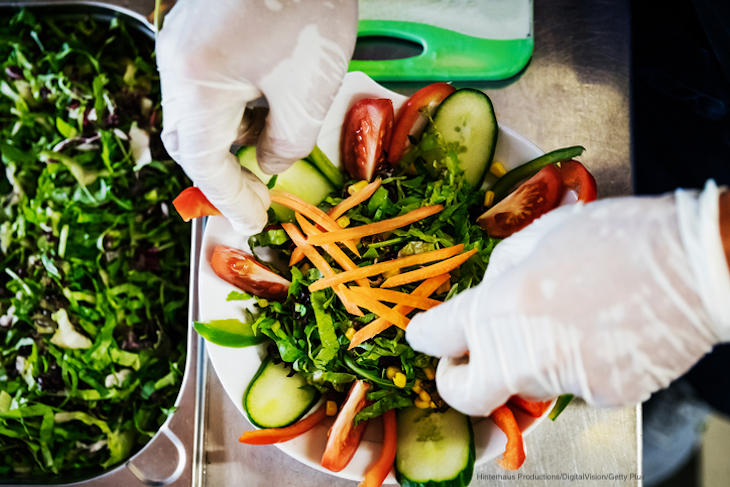It’s time to bring back Gross Food Neews, our look at issues and problems in the food industry that are, well, gross. The topic today is those disposable gloves food handlers use to prevent the spread of bacteria. And the startling finding that some of these new disposable gloves contain feces and bacteria.

There have always been issues with the uses of these gloves. I have seen workers use the gloves while working the cash register and handling money, then going right back to handling food without changing their gloves. The point of the gloves is that you put on new ones when you complete a chore and go back to food handling. But now there’s a new wrinkle.
Microbial testing of new and unused microbial gloves, conducted by Eagle Protect PBC, has found that some new unused disposable gloves are contaminated with bacteria specific to foodborne illness and fecal contamination. These gloves are used in the food service industry and as medical exam gloves.
Twenty-five different brands of gloves were analyzed. Food, dermal, and respiratory pathogens found on the gloves were linked to “the use of polluted water sources; sewage (fecal pollution); and human and animal gut bacteria introduced into glove production environments.”
Steve Ardagh, Chief Executive Officer of Eagle Protect said in a statement, “Strictly speaking, FDA compliance for food contact gloves does not mean gloves are clean or even intact and food safe.We have visited factories reusing dirty water during manufacturing, and packing gloves in open walled, dirty environments.”
Most of these disposable gloves are manufactured in Southeast Asia, typically for the lowest possible price.
The FDA Food Code discourages bare hand contact with ready-to-eat foods, such as salads and sandwiches and, in fact, that violation is often noted on restaurant and food facility inspection reports. Food workers should always use spatulas, tongs, single-use gloves, or dispensing equipment when handling these foods. The FDA states that, “gloves are not total barriers to microbial transmission, and will not be an effective barrier alone for food workers without education on proper glove use and handwashing requirements.”
When using single-use gloves, always wash your hands before you put them on. Change the gloves between handling raw and ready-to-eat products. Don’t wash or reuse the gloves, and discard those that are torn and damaged. Gloves should also be worn when a person has lesions on their hands, or if they have artificial nails or nail polish. Using gloves is not a substitute for correct handwashing.
In addition, gloves should be changed often, and should be worn for a single task. In other words, a food worker should not handle money, take out garbage, or perform other tasks and return to handling foods without changing their gloves.
This new wrinkle in food handler hygiene is concerning. After all, the majority of food poisoning outbreaks are linked to restaurants, which account for 64% of outbreaks that had a single location where food was prepared. The fact that new and unused disposable gloves contain feces and pathogens is disturbing. This is something the FDA should address.




